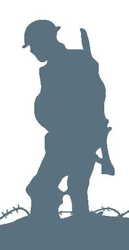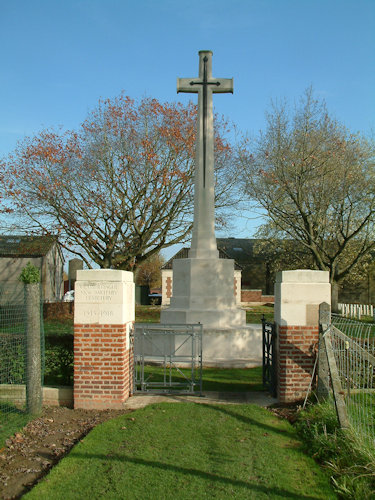His early training with scant practice weapons was at Beacon Hill, Harwich which had been chosen in August 1915 as the depot for the formation of siege batteries. Simeon was to join the 76th Siege Battery as #340648.
These batteries were equipped with heavy howitzer guns, sending large calibre high explosive shells in high trajectory. The 76th. had 4, 9.2 howitzer guns in their battery. These were mainly employed in destroying or neutralising the enemy artillery as well as putting destructive fire down on strong points, dumps, stores, roads and railways behind the enemy line.
According to the ‘History of 76 Siege Battery R.G.A.’ by L.F. Penstone, (who was a member of the battery and would have known Simeon) they left for France in March 1916 on board S.S. Lydia from Southampton. At first they were involved in familiarisation with the guns, once they had got all the equipment together in France and there was much rivalry between the gun teams to set up for action in the shortest time. A gun team consisted of 6 men firing and 6 supporting with 4 guns in the battery but there were hundreds involved with the battery covering all aspects of support and transport using heavy horses and mules at the beginning and lorries later.
By May 11th they were finally in position on the Albert to Amiens road when they sensed that a big engagement would take place in the near future. A gradual build up of infantry took place and the big guns were employed to ‘soften’ enemy strongholds during the week leading up to July 1st and what would later become the dreadful Battle of the Somme. The hamlet of Thiepval was the main target for the 76 as it was known to be a strong German position. It proved very hard to eject the enemy from there and much firing took place but miraculously the battery did not sustain any casualties on that awful first day when thousands of young men lost their lives. For the next 6 weeks there was much action but we gained very little ground and lost so many men. On August 14th. it was noted that 600 rounds were fired by his battery in one day and the lorries had to bring up ammunition supplies 5 times! As a result the battery was congratulated by the Corps Commander on August 20th.as follows:
“Express appreciation of work done by 76 Siege Battery during operations. Thanks for support. Not only was the shooting of the battery excellent, but conduct of men worthy of the traditions of the R.A.”
The battery was constantly under fire and casualties, due to shrapnel wounds, chlorine and tear gas mounted up. However there were lighter moments and much camaraderie. Visits to local towns were high spots and on occasions ‘booty’ was discovered in evacuated trenches and secreted, like a cask of beer in September which eventually secretly filled every mess tin and water bottle!
Tanks first appeared on 15th.September 1916 in the village of Flers when the shock and surprise element partially won the day. Guns of the 76 were involved in the preparation for that memorable moment.
Progress forward was slow and by October 1st. they finally reached what was the enemy front line back on July 1st and by November they were concentrating on the ‘softening’ bombardment for the storming of Beaumont-Hamel by the Royal Naval Division where an amazing German underground complex was discovered called Y Ravine.
Winter arrived and with it “goatskin issue jackets” to help stave off the intense cold. Christmas day was a little quieter and a pig called “Dennis” which had been purchased and fattened up by the battery was duly killed by Gunner Durrant and enjoyed by all. This was to be Simeon’s last Christmas.
January and February 1917 brought more action and casualties. Lt. Satchwell was killed and sadly missed by the respectful battery. He is buried at Ovillers. There were then moves forwards to Pozieres and later to Martinpuich then later to the Arras area in preparation for the big attack on Vimy Ridge commencing 9th.April. Numbers 2 and 4 guns were positioned for this at La Targette where they suffered heavy casualties to their supply column and pack mules whilst numbers 1and 3 guns moved up to Neuville St Vaast.
Again they received congratulations on their efforts “ 76 Siege is about the best shooting battery it has been my good fortune to see and it is in first class order” wrote Lt. Col. C.W. Swinton, Commanding 50th.H.A.G. (May 28th. 1917)
Gunner Simeon Kingsley’s last move was up to the Ypres Salient after a few days of rest and recuperation at Hazebrouck and Poperinghe where he perhaps spent some time at Talbot House run by Rev. Tubby Clayton, a wonderful oasis for the troops where every rank was equal and solace was found.
They together with many others were to be involved in and preparations for the infamous battle of Passchendaele which commenced on 31st July 1917. By the time the fighting ground to a halt on 10th November 1917, the total number of casualties for the British Army was in excess of 300,000.
His battery’s first positions in the Ypres area were at Potton Farm then Marsh Farm near Vlamertinghe, which would later be Simeon’s last resting place. Moving on again the battery found themselves in a very vulnerable position due to enemy shelling as they tried to get to the Cavalry Barracks in Ypres, their designated next point to set up the guns.
July proved to be an horrendous month for them with casualties, fatalities and guns put out of action and it was on July 24th. that our Gunner Kingsley along with Gunners T.H. Benson and W.G. ”Nigger*”Conquest were killed. They lie buried side by side in Vlamertinghe New Military Cemetery, in fact their headstones almost touch, which suggests that they were killed together and are buried in one grave.
When the news got back to England and the dreaded telegram arrived at Grove Road, Shoeburyness, the family like so many others would have been devastated at the loss of their loved one. In all there are 56 names on the roll of honour of those who were killed in the 76th.battery during the four year conflict.
Simeon is buried in Vlamertinghe New Military Cemetery, Plot 3, Row H #21.
May he rest in peace.
* used in the context of 1914-18



